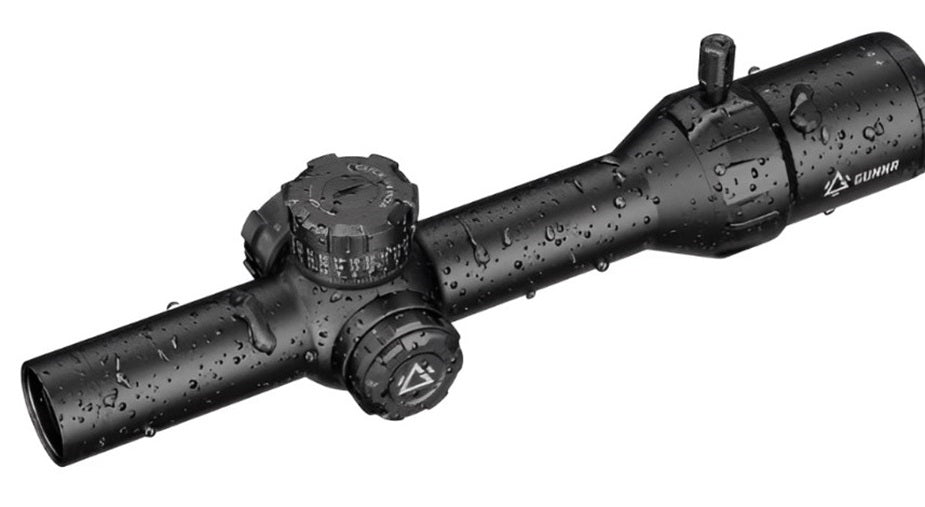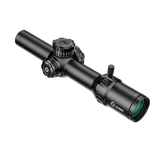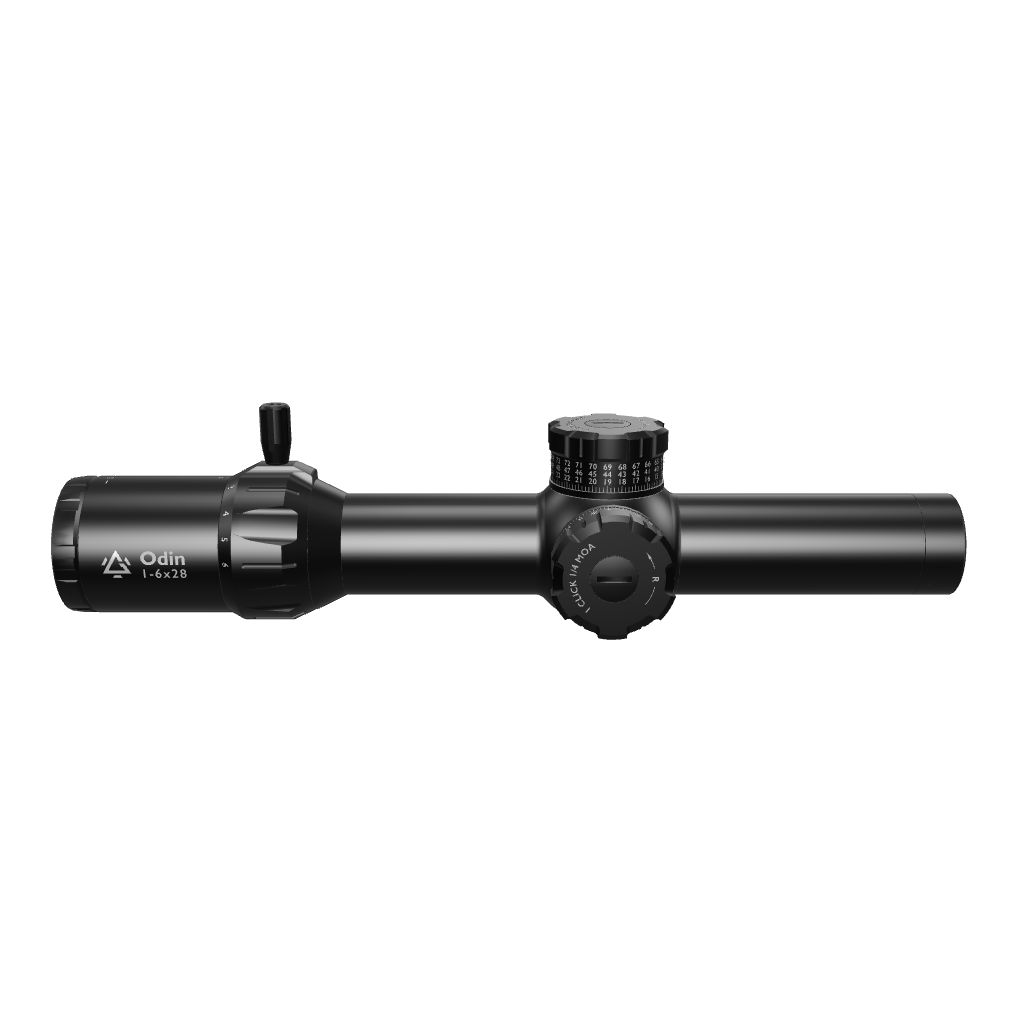COMMON SIGNS OF MOISTURE DAMAGE IN YOUR LPVO
At the end of the day, your LPVO is a piece of optical equipment, and just like any other equipment in this category, it can be susceptible to moisture damage. True, modern LPVOs are made of high-quality material, and they come with incredibly useful water-resistant features.
However, when it comes to water damage, you can never be too safe, and if an unfortunate incident of water damage should occur while you are out hunting, you need to be able to identify it and take some measures to rescue your LPVO before it gets too late.
In this blog, we’ll explore the common signs of moisture damage in an LPVO, how they can potentially impact its functionality, and how to prevent such issues to ensure your scope remains in optimal condition.
HOW DOES MOISTURE DAMAGE HAPPEN?
Moisture damage happens when water or humidity infiltrates into the internal components of your scope. The key word here is “internal” because the exterior components of most scopes are well-designed to withstand exposure to extreme weather. Advanced optic manufactures like Gunnr use durable material in making their optics, and so you can use them almost in any weather.
Internal components, on the other hand, are more fragile. You have to take more decisive action when water comes in contact with the interior components of the scope.
One thing to note about water damage is that the water must not have entered the scope from outside. Yes, when your scope gets wet, there is a higher probability that the water came from outside, but that does not eliminate the possibility that the water could have been formed inside the scope itself. Any of the following situations would cause your scope components to come in contact with water.
Condensation (When Temperature Changes)
When you move from shooting in a cold environment to a warmer environment (or vice-versa), there is a risk of water condensing inside your rifle scope. Condensation is a natural process, and rapid temperature changes of any sort can always trigger the condensation process.
The Seals Fail
Your scope is likely already protected from water damage by O-Ring seals, Nitrogen or Argon Purging, or other types of protective coating. However, these seals could gradually get worn down as you use the scope. At some point, if left unattended, water will eventually make it into the scope.
Improper Storage
You cannot store your scope in humid conditions without proper protection. Improper storage encourages moisture buildup and exposes the interior components.
COMMON SIGNS OF MOISTURE DAMAGE
What if the damage has already happened? Identifying moisture damage is equally important, and it gives you the opportunity to restore the scope or take some action to prevent further damage. Luckily, there are some tell-tale signs of water damage:
1. A Fogged-up Lens
One of the most noticeable signs of moisture damage in your LPVO is fogging on the lens. Fogging is mostly caused by temperature changes, which cause moisture to condense in the scope.
If you are in a critical shooting situation, the last thing you want is a fogged-up lens.
Fogging is particularly disruptive because it obstructs your view through the lens, making it difficult for you to acquire targets with accuracy.
2. Water Spots or Streaks
Another clear indicator of moisture damage in your LPVO is that you start seeing water spots or streaks on the internal lenses. This could be an indication that moisture has pooled in the scope or that it has already evaporated but left behind some residue.
Like fogging, water spots also significantly affect optical clarity, and the images through the lens become distorted. A fogged lens also means reduced contrast, and all of this greatly impairs your shooting accuracy.
3. Mold or Mildew Growth
When you notice mold or mildew in your scope, it means the problem has been going on for longer. In other words, your scope has been exposed to moisture for a long time. Mold quickly develops when humidity levels are high, and there is limited space in the scope for air to circulate properly.
With most of the other problems, you can easily solve them by properly cleaning the lens. Mold is a bigger issue because it not only degrades the quality of the optics but can also damage lens coatings, and affect you in the long-term.
There is also a health risk here. When inhaled, mold can cause allergic reactions or respiratory diseases.
4. Corrosion on Internal Components
Corrosion is another alarming sign of moisture damage that can cause more permanent damage to your LPVO. Several parts of your LPVO are made of metal, and so when you staring noticing rust or discoloration on internal metal parts like the turrets and adjustment mechanisms, you need to take action.
Corrosion hinders movement and leads to mechanical failures, making it difficult to make precise adjustments during shooting.
5. Difficulty in Adjustments
Another symptom of water damage in your LPVO is when you start noticing an unusual stiffness or resistance every time you go to adjust the elevation or windage turrets. There is a possibility that moisture has caused the internal components responsible for moving these turrets to rust or swell.
Impact: When you have difficulty in making adjustments, shooting becomes a nightmare: you are not as accurate as you could be, and overall performance cannot be up to standard.
6. Reduced Optical Clarity
When there is a sudden and noticeable decrease in the overall quality of the image you see through your scope, this is a potential sign of moisture damage. Sometimes, when the lens is wet, you may experience a decline in brightness, contrast, or sharpness. This is an effect of moisture.
Impact: Reduced optical clarity can hinder target acquisition and overall shooting performance, making it challenging to identify details at various distances.
HOW TO PREVENT MOISTURE DAMAGE
The good news is that, for the most part, you can prevent moisture damage from hurting your scope or ruining your shooting experience. You will need some really effective strategies though, so try any of the following:
1. Start With a High-Quality LPVO
Many factors distinguish high-quality LPVOs from low-quality scopes. Most of them involve technicalities and features, but another crucial factor is the scope’s ability to withstand the natural elements, including rain, cold, and extreme temperatures. When choosing an LPVO, therefore, you have to start with its features, but not end there. Your scope must have more. Lets take an example.
RECOMMENDED: ODIN SCOPES: MORE THAN HIGH QUALITY!
The Odin line of LPVOs was recently released, and like ODIN—the Norse god of war—it is made to deliver exceptional performance in any environment. A first focal plane with a tree-reticle design, this scope enables you to consistently hit your mark with precision at greater distances.

What makes the ODIN even more special is that it features an Extra-Low Dispersion (ED) glass element from German SCHOTT with advanced, fully multi-layer coatings. This lens, apart from enabling you can easily spot details and stay locked onto your target, whether at dawn, dusk, or mid-day, is difficult to scratch, break, or get clogged up.
Then there are the waterproofing abilities. With an IP67 rating, the Odin scope is protected from dust and water. Whether you're caught in a downpour or surrounded by dust, it continues to perform reliably to keep you on target. Built to withstand temperatures from -59°F to 149°F, this scope performs consistently whether you're facing frigid cold or blazing heat.
With such a high-quality scope, the risk of water damage is already significantly reduced almost to zero. You can proceed to take the following measures:
2. Always Store your Scope in a Controlled Environment
The ideal place to store your LPVO is a cool, dry area away from extreme temperatures and high humidity. If possible, find an area where the relative humidity is below 50%.
Avoid Direct Sunlight: Keep your scope out of direct sunlight to prevent heat buildup, which can help the condensation process.
3. Use Protective Cases
It is always wise to invest in a quality protective case that is capable of safeguarding your LPVO from environmental factors. A hard case with foam padding can protect against impacts and moisture. Look for cases designed specifically for optics.
Soft Cases: If a hard case isn’t available, a padded soft case also does a decent job when it comes to protecting the scope against scratches and dust.
4. Use Lens Caps
Always use lens caps when your LPVO is not in use to prevent dust, moisture, and scratches.
Ensure that the caps fit securely and check them periodically for wear. This simple step can significantly reduce the risk of moisture intrusion.
5. Check the Seals Regularly
Inspect the seals on your LPVO for signs of wear or damage.
Seal Integrity: If you notice any degradation, consider having the seals replaced by a professional to prevent moisture ingress.
6. Use Silica Gel Packs
Consider placing silica gel packs in your storage case to absorb excess moisture.
Moisture Control: These packs help maintain a dry environment, especially beneficial in humid climates.
7. Conduct Regular Maintenance and Inspections
Perform regular maintenance checks on your LPVO to identify any potential issues early.
- Visual Inspection: Look for signs of moisture damage, including fogging, water spots, or corrosion.
- Functionality Checks: Ensure all adjustments work smoothly, and check for any unusual sounds or stiffness.
8. Avoid Exposure to Extreme Conditions
Be mindful of environmental conditions when using your LPVO.
- Avoid Heavy Rain: If possible, avoid exposing the scope to heavy rain or submerging it in water. Use rain covers when necessary.
- Dry Immediately: If your scope does get wet, dry it off immediately and store it in a dry place.
CONCLUSION
Moisture damage can severely impact the performance and lifespan of your LPVO, but by being vigilant and proactive, you can prevent these issues. Understanding the common signs of moisture damage—such as fogging, water spots, mold growth, and difficulty in adjustments—enables you to take immediate action if you notice any of these symptoms.







